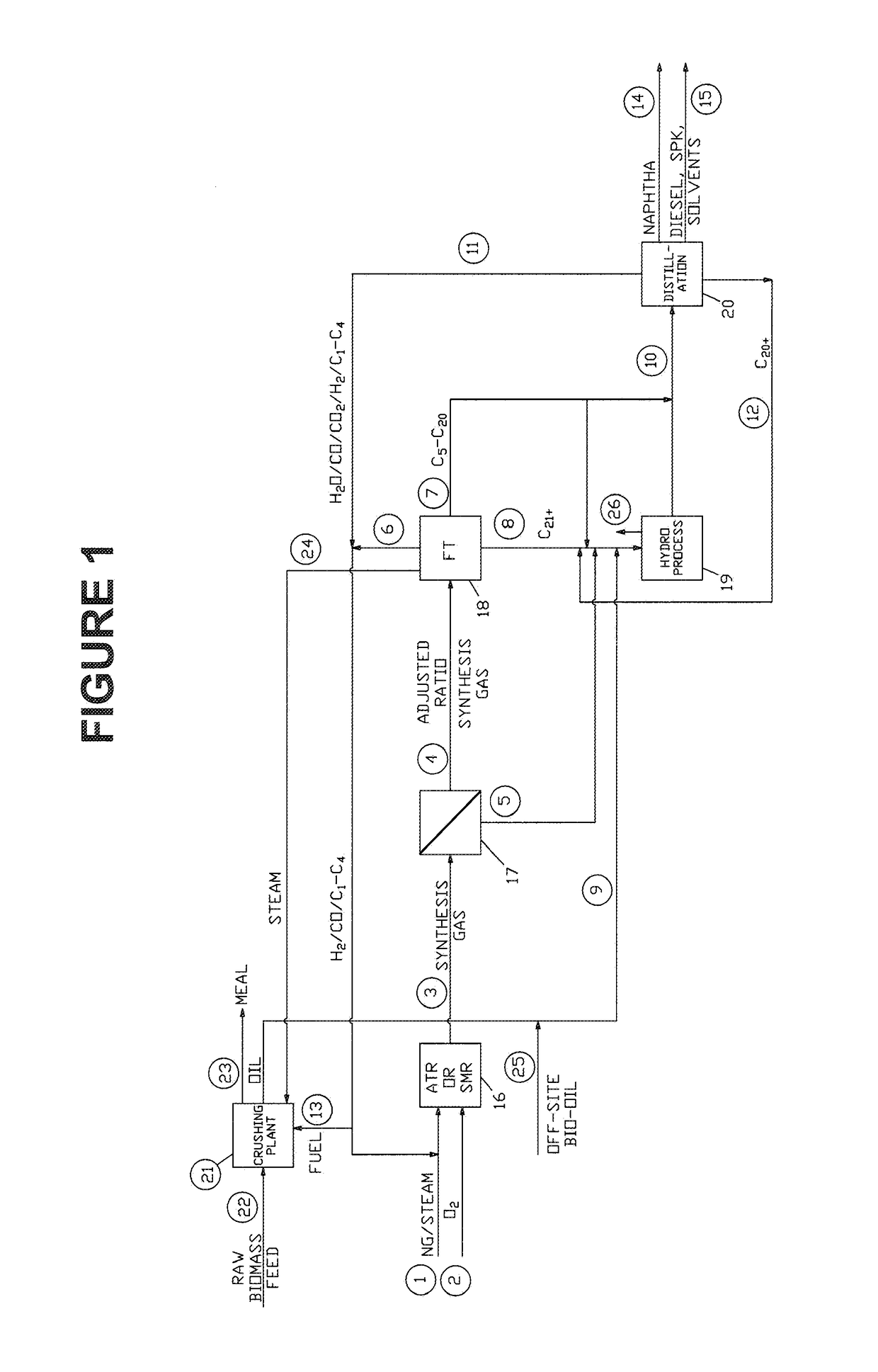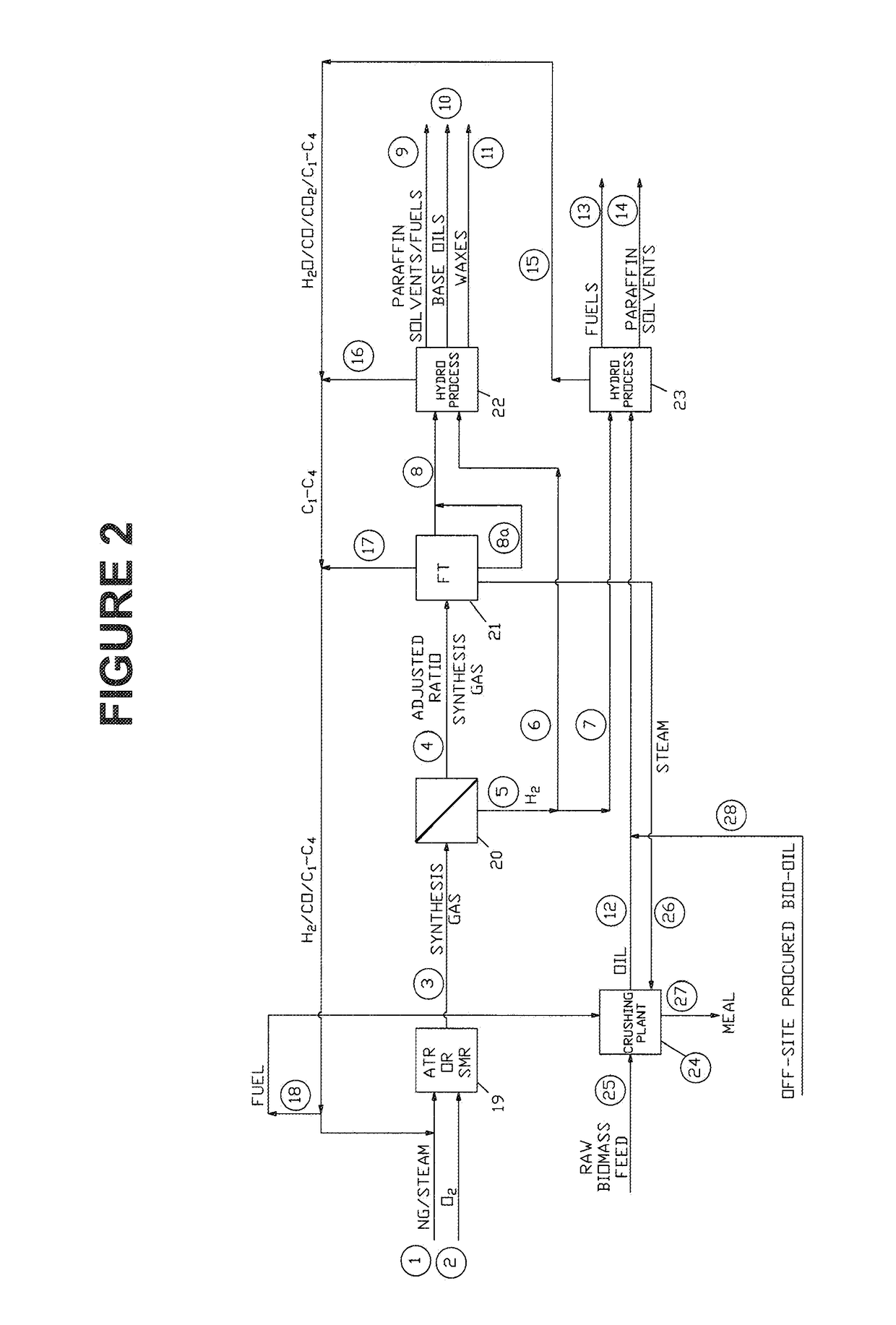Integrated fuel processing with biomass oil
a technology of biomass oil and fuel processing, applied in the direction of hydrocarbon oil treatment, hydrocarbon oil cracking, bio-feedstock, etc., can solve the problems of low production of greenhouse gases, process is becoming less desirable, and the processing of these materials requires a considerable volume of hydrogen, so as to achieve low cost hydrogen, efficient utilization of renewable feedstock, and efficient utilization of resources (hydrogen) and infrastructur
- Summary
- Abstract
- Description
- Claims
- Application Information
AI Technical Summary
Benefits of technology
Problems solved by technology
Method used
Image
Examples
example
[0076]Natural gas (21.6 MMSCFD) was directed to and reacted in an autothermal reformer along with (13.1 MMSCFD) 99.5% oxygen to produce 73.2 MMSCFD of synthesis gas 3 of the following composition:
[0077]
ComponentMol %H264.98CO28.14CO25.54Ar.08N2.18C11.08
[0078]A hydrogen membrane separation unit 5 was used to extract approximately 4.0 MMSCFD of a hydrogen rich stream from the synthesis gas stream. The hydrogen was further purified and compressed for later use in the product refining section of the process.
[0079]The adjusted ratio synthesis gas, after hydrogen extraction, was reacted over a cobalt Fischer Tropsch catalyst in a Fischer Tropsch reactor in multiple stages to a CO conversion of approximately 92%, resulting in the production of 2,218 BPD of a synthetic crude product. The synthetic crude is collected in separators as a heavy Fischer Tropsch liquid (wax 1,748 BPD) and a light Fischer Tropsch liquid (oil 471 BPD).
[0080]Approximately 850 tons / day of canola seed is mechanically ...
PUM
 Login to View More
Login to View More Abstract
Description
Claims
Application Information
 Login to View More
Login to View More - R&D
- Intellectual Property
- Life Sciences
- Materials
- Tech Scout
- Unparalleled Data Quality
- Higher Quality Content
- 60% Fewer Hallucinations
Browse by: Latest US Patents, China's latest patents, Technical Efficacy Thesaurus, Application Domain, Technology Topic, Popular Technical Reports.
© 2025 PatSnap. All rights reserved.Legal|Privacy policy|Modern Slavery Act Transparency Statement|Sitemap|About US| Contact US: help@patsnap.com



